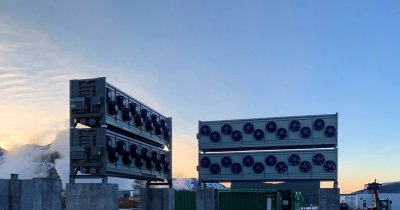AZO Cleantech reports that the solution developed by Arup uses a copper-based polymeric filter that can convert carbon dioxide in sodium bicarbonate, which can then be released into the ocean, without the risk of disrupting ecosystems.
Furthermore, the scientist demonstrated that this solution has a carbon capture capacity 300% greater than that of traditional air capture techniques.
Arup SenGupta said that "I believe we have a responsibility to build direct air capture technology in a way that it can be implemented by people and countries around the world. Anyone who can operate a cell phone should be able to operate this process. This is not technology for making money. It's for saving the world."
"The worst part of this crisis is that people who are marginalized, who are poor, will suffer 10 times more than those who contributed to this situation", he added.
According to the researcher, there are three ways to reduce and remove carbon emissions, the first being a legislation that would allow us to reduce the levels of CO2 that would otherwise be released.
Then, there is carbon capture technologies that allow us to prevent the release of more emissions in strategic points, such as powerplants and factories and lastly, there is direct air carbon capture, which eliminates the emissions that exist in the atmosphere now.
"If you're capturing carbon dioxide from a chimney at a plant, the amount of CO2 in the air can be upwards of 100,000 parts per million. At that concentration, it's easy to remove. But generally speaking, the CO2 level in the air is around 400 parts per million. That's very high from a climate change point of view, but for removal purposes, we consider that ultra-dilute. Current filter materials just can't collect enough of it", the scientist explained.
The advantage to SenGupta's solution is that we can use the ocean's capacity to store the resulted sodium bicarbonate without the fear of affecting the ecosystems.
"It has no adverse impact on the ocean whatsoever. It doesn't change the salinity at all", he added.
Companies can look into the new solution and work with its creator to see how it can be scaled up and implemented on an industrial level.
 Mihai - Cristian Ioniță
Mihai - Cristian Ioniță












Any thoughts?